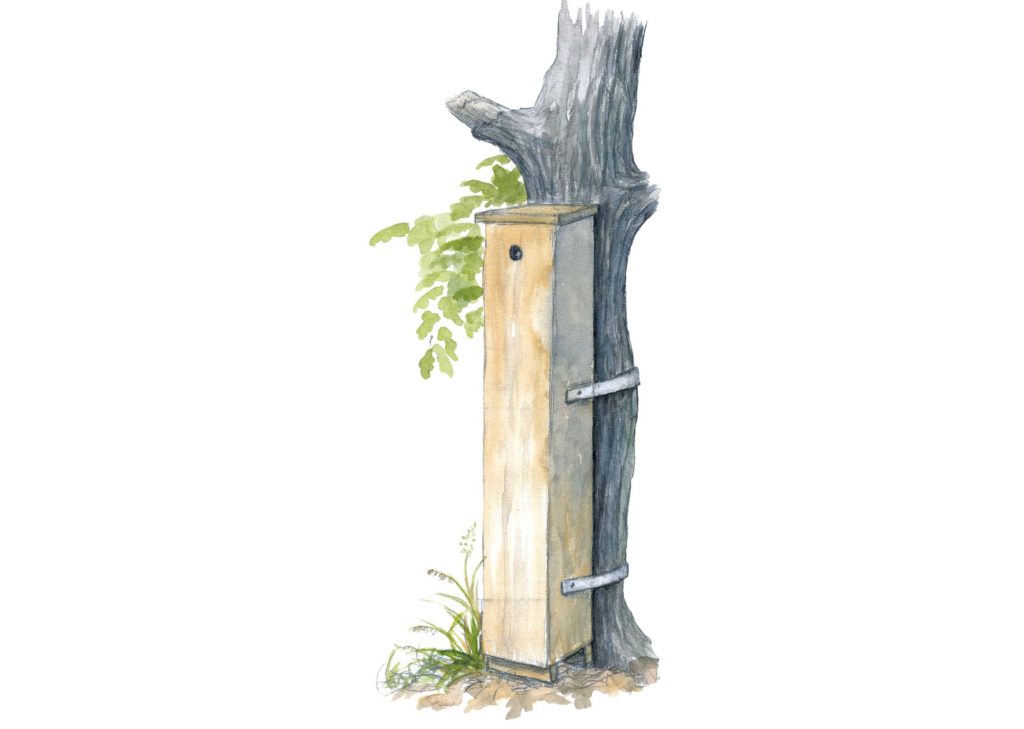The wood mould box can bridge the gap in time and space
The wood mould boxes can be used in several ways, but the most obvious is to locate them in areas with a shortage of hollow trees or in areas where the age differences between the hollow trees are too great.
But it is also possible to help the species spread to new areas with suitable habitats by placing the boxes as what are called ‘stepping stones’, important habitats that connect these areas, to bridge the spatial gap caused by the fragmentation of oak woodlands. A third, untested way of helping the species in a landscape is to first let the boxes be colonized in a species-rich area, and then move the boxes to less species-rich areas.
The wood mould box in LIFE – Bridging the Gap
The type of box used in the aforementioned research studies was quite small, 70 litres, and was positioned 4 metres up the trees. The box designed in LIFE – Bridging the Gap is almost 10 times larger (50x50x250 centimetres) and was positioned on the ground, fastened to a tree. It is made of pine and oak, and is filled to 80% with equal parts of oak chips/shavings and oak leaves. Also, 20 litres of water has been poured into it from above. The roof is designed so that it lets in a little rainwater through two channels that end at drilled holes at the corners of the roof. This creates a variation of moisture levels in the box, and more species can find their favorite environment. To retain moisture during dry periods, a piece of tarpaulin, shaped like a bag, is laid in the bottom of the box.
In the upper part of the wood mould box is a hole (6 cm) that allows birds to enter the box and build nests. When making entry holes in a wood mould box, the size can be varied to accommodate different birds. Some of the boxes have a section for baths. The box can be positioned on a concrete pad or on oak beams to reduce dampness on the outside and to slow the rotting of the wood in the lower part of the box.

